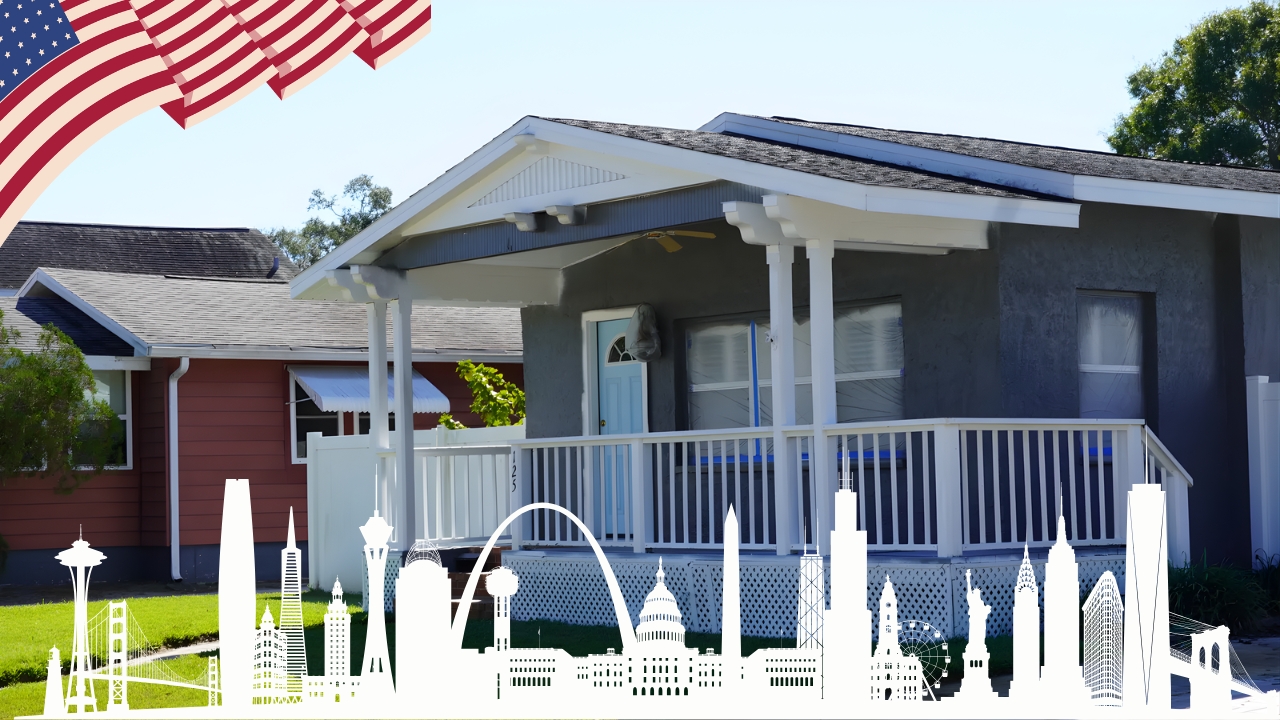There is a significant change in regional orientation with regard to U.S. housing market in the late 2025 as some cities are boiling with high demand and employment growth, and others are cooling with a change in affordability and inventory dynamics. This patchwork of trends brings out the fact that local economics, employment, and lifestyle preferences are redefining real estate throughout the country.
Cities Heating Up in Late 2025
– Northeast and Rust Belt Dominance: Cities such as New Haven, CT; Rockford, IL; and York-Hanover, PA are witnessing some of the hottest housing markets where their inventory is tight and their buyer demand is high.
– Technological and Economic Cores: Urban life is becoming hot once more in San Francisco driven by the proliferation of AI employment and higher rents, at the same time some suburban Silicon Valley neighborhoods cool.
– Emerging Growth Areas: Bastrop near Austin, TX is at the top of price growth due to new tech hubs and massive development projects such as a film studio worth 1.9 billion.
– Choose Midwest and Rust Belt metros: Muskegon, MI and Parkersburg, WV are also characterized by sound price and sales improvements due to diversification of the economy.
Cities Hedging and Reckoning Price Wars
– Florida Market Slowdown: A total of seven out of the 10 hottest housing markets are in Florida, with Cape Coral (7.1% reduction in prices), Naples (6.7%), and Punta Gorda (6.2%). These regions are struggling with the problem of affordability, expensiveness of insurance, and demand that is less employment-based.
– Sun Belt and Coastal Corrections: Markets that have soared during the pandemic as a result of migration and stimulus are reversing with mortgage rates increasing, affordability decreasing and insurance premiums are rising.
– This is because of some Southern and Western Metros San Antonio, TX is trending towards the buyer market conditions and Riverside and San Diego show the growth of inventory and constant or slightly decreasing prices.
The Reason Behind These Shifts
– Inflation and Mortgage Rates: At the same time, at 6 percent mortgage rates, the buying power slows down, which suppresses the enthusiasm of buyers and leads to a reassessment of prices in the overheated markets.
– Job Market and Industry: Cities that have healthy employment increases in the healthcare, financial, educational, biotech, and technology sectors attract buyers, and command higher home prices.
– Local Factors: Insurance premiums, risk of natural disasters (e.g. hurricanes in Florida), and supply chain challenges do not impact local markets equally.
– Migration and Lifestyle Trends: The trends in preferences of people towards urban or suburban or rural living after the pandemic remain to be in flux, causing a shift in the demand trends.
What This Implicates on Buyers and Sellers
– Shoppers can enjoy greater bargaining capability and improved rates in cooling markets, particularly in Florida and some of Texas.
– Hot markets will see sellers attracting quick activity, numerous bids and high price growth, particularly in the Northeastern and some Rust Belt metros.
– In certain markets such as Detroit and Baltimore, where prices are much lower than those in the country, investors and landlords have become an increasingly influential factor, purchasing property at a discounted rate.
Summary Table: U.S Housing Market Trends November 2025
| Market Type | Notable Cities/Regions | Trend |
|---|---|---|
| Heating Up | New Haven, CT; Rockford, IL; Bastrop, TX; San Francisco, CA | Price and demand growth |
| Cooling Down | Cape Coral, FL; Naples, FL; San Antonio, TX; Riverside, CA | Price declines, buyer’s market |
| Influencing Factors | Inflation, mortgage rates, job growth, insurance costs | Regional variation |
FAQs
Q1: What U.S. cities are the hottest in terms of housing market by the end of 2025?
Cities in the northeast and certain Rust Belt urbanizations, including New Haven, CT, and Rockford, IL are also in the hottest spots.
Q2: Why is Florida housing market cooling?
Among the major factors are increasing mortgage rates, prohibitive insurance premiums and affordability concerns.
Q3: Do cooling markets have us buying now?
When the market is cool, the bargaining force to buy and the price are usually low.

